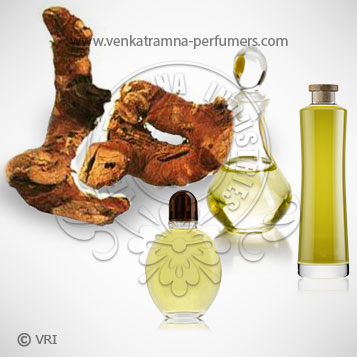
| Botanical Name | Alpina Officinalis/Galangal |
| Common Name | Low-John Root, False ginger Oil |
| Country of Origin | India, China, Japan |
| Solubility | Soluble in Alcohol and oils & insoluble in water. |
| Specific Gravity | 0.965 (0.955 To 0.975) |
| Optical Rotation | -3.50 to -6.50 |
| Refrective Index | 1.4948 (1.4940 To 1.4952) |
| PlantPart | root |
| Bland With | Black Pepper Cardmom,Chamomile Roman, Cistus, Cypress, Elemi, Eucalyptus Globulus, Frankincense, Geranium, Ginger Fresh, Hinoki, Juniper Berry, Lavender, Lemon, Marjoram Sweet, May Chang,Palmarosa, Patchouli, Scotch Pine,Rose Moroco Absolute, Rosemary, Rose Wood, SageDalmation, Spikenard, Sugandha Kokila, Turmeric, Vetiver. |
| CAS No | 8024-40-6 |
| Flash Point | 70ªC |
| Extraction Method | Steam Distilled |
Galangal is a yellow to olive brown liquid that is steam distilled from the dried comminuted rhizomes of the plant. Galangal is the dried root of the plant which found mainly in eastern Himalayas and south west India. It is used as a spice and has wide usage in various medicinal preparations. Ginger is commonly used for many types of nausea and vomiting. It's also used for menstrual cramps, osteoarthritis, diabetes, migraine headaches, and other conditions, but there is no good scientific evidence to support many of these uses. In foods and beverages, ginger is used as a flavoring agent.
It has been used as an aphrodisiac. In cooking it is considered to be like ginger, but with some cardamon qualities. Medically used for cholera, congestion, digestion and skin problems. In magic it was used to create protection and safety. Ginger is a plant used in traditional medicine against different diseases because of its various properties (antimicrobial, antioxidant, anti-inflammatory, anticoagulant, etc.). Ginger is “generally recognized as safe” by the Food and Drug Administration. Numerous studies have been carried out to characterize and isolate its main bioactive compounds to elucidate the mechanisms of its antimicrobial activity against pathogenic and spoilage microorganisms in foods. Results indicate that ginger contains monoterpenoids, sesquiterpenoids, phenolic compounds, and its derivatives, aldehydes, ketones, alcohols, esters, which provide a broad antimicrobial spectrum against different microorganisms and make it an interesting alternative to synthetic antimicrobials. However, its application in foods has been scarcely explored and represents an opportunity area for further research.
Color : Yellow to olive brown liquid,
Aroma : Sweet, spicy with wood and camphor nuances.
It contains Ethyl cinnamate (25%), Ethyl p-methoxycinnamate (30%), P-methoxycinnamic acid
The medicinal part of ginger is rhizomes, which are used in traditional medicine for treatment of wide range of ailments. In Ayurveda system, ginger and milk or water in the form of paste are used externally for treatment of infantile colic. The combination of ginger with honey is used for asthmatic bronchitis, cough, hiccups, and respiratory colds. Ginger is used for digestive problems in western medicine. Henry VIII recommended the use of ginger for preventing the plague. The prepared bread with ginger by Greeks is consumed after meal as digestive aid. Blood purifying, aphrodisiac, sex stimulants, appetizing, anti-flatulent, anti-spasmodic, anti-hemorrhoid, anti-vomiting, and anti-nausea effects of ginger are other traditional prospects. Ginger rhizomes are containing fatty oils (3-6%), proteins (9%), carbohydrates (60-70%), crude fiber (3-8%), ash (8%), water (9-12%), and volatile oil (2-3%). Nowadays, ginger hydro-ethanol extracts are extensively used as analgesic, anti-inflammatory, anticancer, anti-diabetic, hepato-protective, nephron-protective, and antioxidant